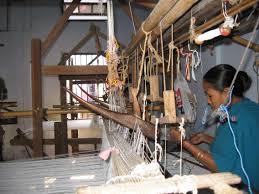National Handloom Day is observed annually on August 7th in India. This day honors the handloom weavers and their significant role in the country’s economy and culture. Let’s delve into the history, significance, and impact of this important day.

History and Significance of National Handloom Day
The handloom sector is deeply rooted in India’s rich cultural heritage. It serves as a vital source of livelihood in rural and semi-rural areas. Over 70% of all weavers and allied workers in this sector are female, making it an essential contributor to women’s empowerment.
The Swadeshi Movement, launched on August 7, 1905, encouraged indigenous industries, including handloom weaving. Recognizing the importance of this sector, the Government of India designated August 7 as National Handloom Day in 2015. The inaugural celebration took place in Chennai, with Prime Minister Narendra Modi emphasizing the socio-economic impact of handloom weaving¹.
Contributions and Initiatives
National Handloom Day serves several purposes:

- Honoring Weavers: On this day, we pay tribute to the handloom-weaving community and recognize their exquisite craftsmanship.
- Socio-Economic Development: Handloom contributes significantly to India’s socio-economic development. By supporting this industry, we enhance the income of weavers and promote economic growth.
- Eco-Friendly Production: Handloom processes are eco-friendly, requiring minimal capital and power. Weavers have the flexibility to innovate and adapt to changing fashion trends and customer preferences.
- Empowering Women: With a majority of female weavers, the handloom sector directly addresses women’s empowerment.
Government Interventions
The Indian government has implemented various interventions to support handloom weavers:
- Block Level Clusters: Integrated development of handloom pockets through skill up-gradation, infrastructure improvement, and design innovation.
- Skill Up-Gradation: Training and exposure for weavers to learn new techniques, technology, and eco-friendly practices.
- Hatkharga Samvardhan Sahayata (HSS): Aims to improve fabric quality and productivity by adopting upgraded looms and accessories.
- Work Sheds: Construction of individual work sheds near weavers’ homes, benefiting marginalized households and female weavers.
- Engaging Designers: Professional designers contribute to innovative designs and products in block-level clusters and beyond¹.
In summary, National Handloom Day celebrates the legacy of handloom weaving, empowers artisans, and underscores the sector’s vital role in India’s cultural heritage and economic growth. 🌟🧵🇮🇳²³⁴.